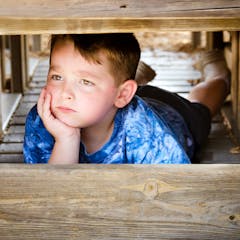
Articles on Children
Displaying 821 - 840 of 1056 articles

No Theresa May, “deprioritising” school places for children isn’t the right way to go about reducing immigration figures.

The questions young people tend to ask about maths often relate to their personal experience of how they found maths in school.

The gender gap matters, and we need to recruit, train and retain more men to care for and educate our youngest children

There’s no good reason why diagnosis rates differ. And it may be down to gender discrimination.

Being able to sound out letters in words doesn’t mean you can understand them. There is no clear evidence that a new phonics screening test for children in Year 1 will help improve reading levels.

Parents of children who have complex healthcare needs often find their role as a mother or father is overwhelmed by all the clinical tasks they have to undertake.

Research shows early childhood educators tend to prop up their low-paid jobs using their household income, or by borrowing from families.

By four years, children have already begun to internalise bias and stereotypes. Yet research shows teachers and parents are often uncomfortable or unsure about talking to children about cultural difference.

Little kids cover their own eyes and feel hidden, even if they’re still fully visible. New research suggests this doesn’t mean children can’t understand others’ perspectives, as had been assumed.

For bilingual children, the constant switching between languages is like a frequent exercise for the ears and the brain.

Experts are desperately trying to find solutions to the growing public health problem of type 2 diabetes in the young. A number of trials are underway, and some look promising.

Developmental coordination disorder has only recently been recognised for what it is.

New reports show a widespread lack of care for the cultural needs of many of the 19,000 Aboriginal and Torres Strait Islander children in child protection and out-of-home care.

As the torrent of carefully created social media posts to sites such as Facebook grows, who is to say which is the ‘real’ you.

We need a clear plan in place to ensure that no child falls through the net. Such a plan needs to be both effective and cost-effective.

While students enjoy learning with robots, research finds that teachers are more sceptical – worrying about their job security and technical capabilities of robots.

We need to educate children about how to behave responsibly online.

Two years of high-quality preschool is one of the most effective strategies we have to change the trajectories of children from disadvantaged backgrounds.

Updated guidelines for how much screen time children can have puts most of the onus on the parents to decide.

Last year, ChildLine was contacted every 30 minutes by a young person having suicidal thoughts.
